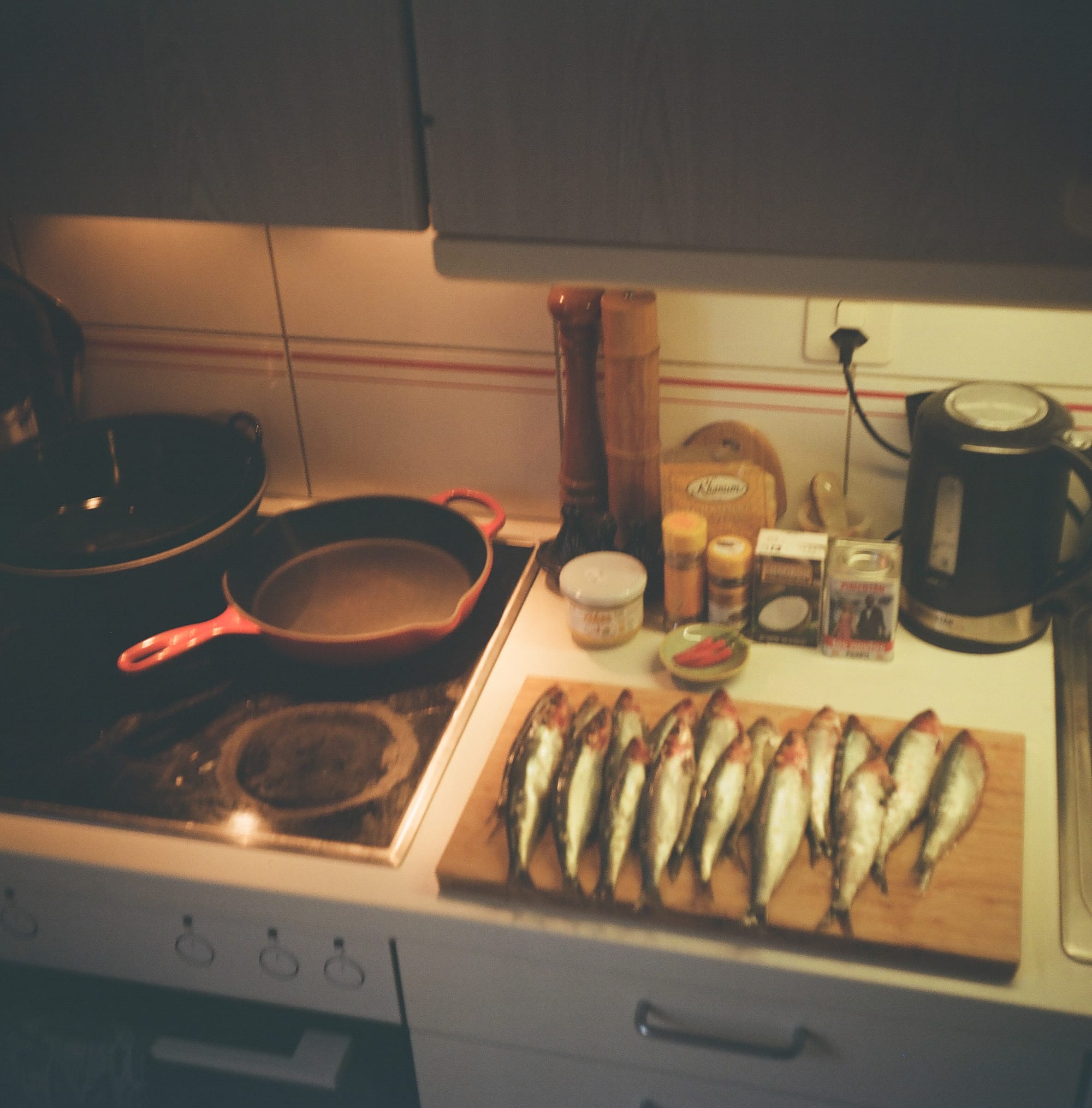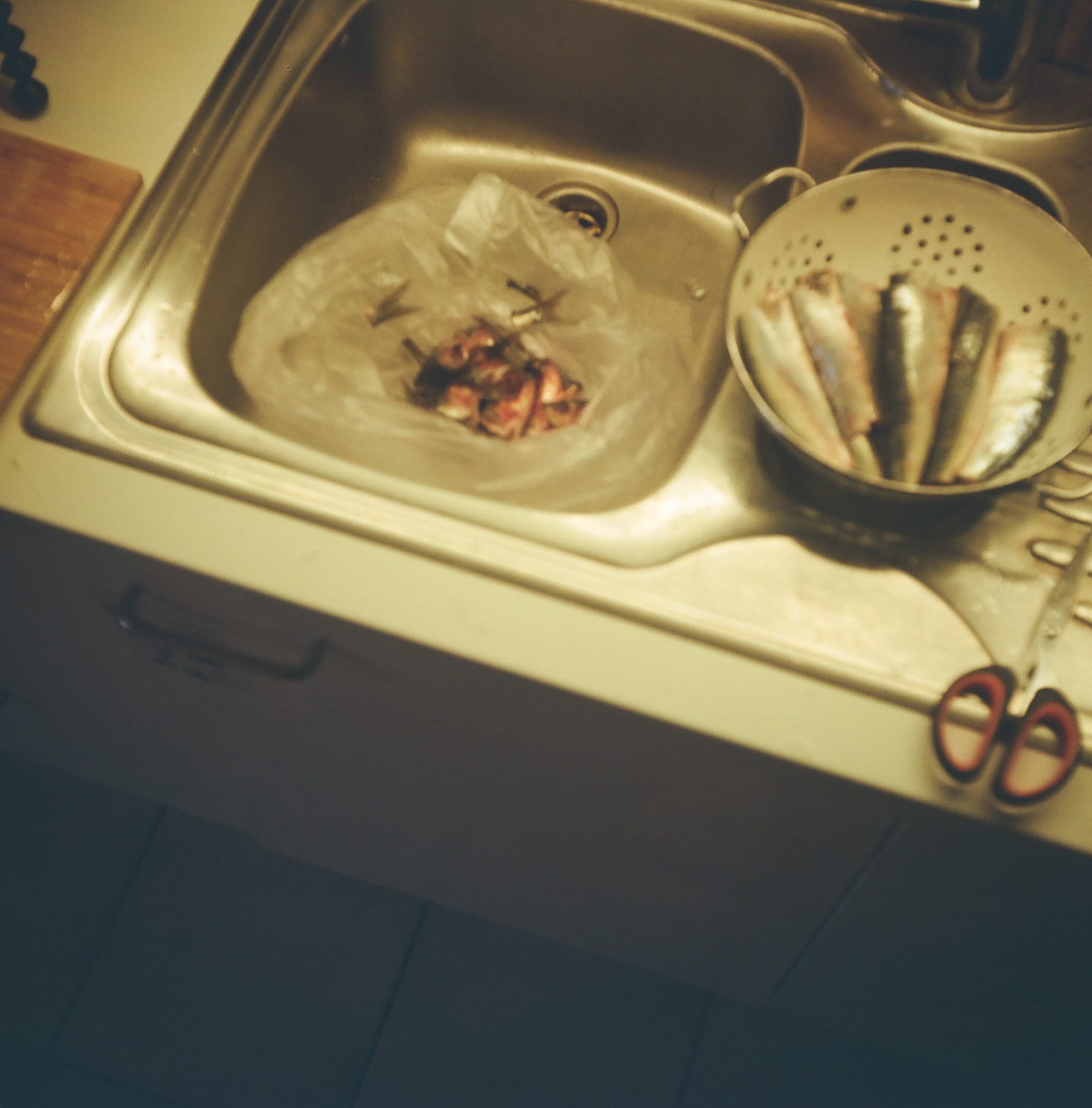What to eat BANGLADESH 🇧🇩 Hilsa (or ilish) fish curry
The national dish of Bangladesh, hilsa or ilish fish curry, is a tough one to source in Europe... the fish is South Asian, a cousin of herring... also the complicated matter of mustard oil, something that is illegal to cook with in the European Union... due to the high levels of erucic acid.

Hilsa (or ilish) fish curry
Published January 5, 2023 · by Amanda Rivkin
Switzerland established bilateral relations with Bangladesh in 1972, just one year after Bangladesh declared its independence from India. It took almost a decade after for the Swiss Agency for Cooperation and Development to establish an office in Dhaka, the capital of the new nation.
In 2020, a project office opened in Cox’s Bazaar, a place teaming with displaced Rohingya Muslim refugees from neighboring Myanmar, or Burma as it was known before military junta rule under her majesty’s crown. An embassy did not open until 2005.
In 2021, trade between Switzerland and Bangladesh crossed the symbolic threshold of one billion Swiss francs, with most of that trade balance tipping in favor of Bangladeshi exports to Switzerland, mostly textiles and pre-fabricated products. In return for all those voluminous goods, Bangladesh receives Swiss contributions in the form of “poverty alleviation and development efforts," according to the Swiss Federal Department of Foreign Affairs.
Despite the movement of so many goods, there is far less exchange among the Swiss people and one of Asia’s largest majority Muslim nations. For a country with a population of nearly 170 million people, only 1,500 or so have settled in Switzerland. And of the Swiss, the Swiss Embassy in Dhaka counts just over 100 Swiss nationals as residents, many dual citizens among them.

Hilsa, or ilish, is procured on special occasions and is traditional on the first day of the Bengali new year. Usually served with rice, it accompanies Hindu celebrations as well as marks wedding celebrations when the groom’s family provides the bride’s family with the dish. While hilsa curry is traditionally Bengali, is also popular in eastern India and can be traced back to royal courts and the wealthy elite in Bengali culture.
The fish is a river fish in season only from February to March and August until October, coinciding with the rainy season in Bangladesh. Hilsa is seen as a symbol of prosperity and fortune, tying its culinary merit with its symbolic worth on special occasions culturally.

The national dish of Bangladesh, hilsa or ilish fish curry, is a tough one to source in Europe. First, the fish is South Asian, a cousin of herring, but not like Western hemisphere fish and not in demand enough to cultivate trade routes in it alone. London-based Bangladeshi diaspora cookbook author Dina Begum suggests salmon as a substitute, though the recipe below opts for Atlantic sardines. Choose something fresh that you can live with.
There is also the complicated matter of mustard oil, something that is illegal to cook with in the EU, the US and Canada. This is due to the high levels of erucic acid, though it is generally less hazardous than regulators would make it out to be, according to Dan Kaszeta, a chemical, biological, radiological and nuclear weapons expert. "Regulators gonna regulate," he said.
Health-wise, Bangladesh’s national plate is rich in omega-3 fatty acids and enriched by the healthy fats and nutrients in coconut milk. The spices in hilsa or ilish fish curry have anti-inflammatory capabilities and help boost the immune system naturally.
Recipe
Ingredients:
1.25 kilos Atlantic sardines or other small, herring-like fish available fresh where you are
Mustard seeds
Tumeric
Salt
250 ml of coconut milk
hot chili pepper of spicy paprika
4 red chilis (green chilis if you can find)
Ghee
Black cumin seeds
Basmati rice
Directions:
Step 1: Soak four tablespoons of mustard seeds in water. Set aside.
Step 2: Wash the fish with cold water. Then clean the fish by cutting off the heads and tails. Slice length wise along the belly and pull the guts out using your thumb and forefinger. Place all excess fish material in a plastic bag for the trash. If you opt for a different fish, clean accordingly.
Step 3: Combine 2-3 tablespoons turmeric and salt. Then dry rub inside and outside of fish and set aside. Sprinkle some more turmeric atop and a few pinches extra of salt. Set aside 15 minutes.
Step 4: Combine coconut milk and a tablespoon each of turmeric and hot chili pepper or spicy paprika. Mix together.
Step 5: Remove the stems and seeds from the chilis in similar fashion as the sardines. Slice length wise.
Step 6: Drain the mustard seeds in a rice strainer.
Step 7: Now it is time to fry the fish. Due to the fact that mustard oil, which is traditional for this dish, is banned in cooking in many Western countries in Europe and North America (due to erucic acid), I used ghee and mustard seeds as a substitute, though Bangladeshi diaspora cookbook author Dina Begum suggest vegetable oil and mustard seeds or vegetable oil and English mustard to taste.
If you opt for ghee, use about 5-6 tablespoons on high heat before adding mustard seeds, then fish. Be careful as the mustard seeds are unlikely to be completely dry after soaking and therefore may pop. Fry both sides of the fish until golden brown and set aside on a paper towel covered plate.
Step 8: Add one more tablespoon of ghee and cover as it melts, allowing for mustard seeds to pop. Add one tablespoon of cumin seeds. Then stir in the coconut milk paste. Cover for 2 minutes. Return fish to pan and add red chilis. Place on low to medium heat for 15 minutes.
Step 9: Serve with rice, basmati (preferrable) or jasmine.
Tips, tricks and notes:
Absent hilsa or ilish fish in Europe, commit yourself to a fish you like and will enjoy. As with all things fish, fresh is best. Begum, the author of Made in Bangladesh, recommends salmon and the restaurant we visited, Sajna in Geneva, did the same. I used Atlantic sardines as they were freshest and sounded like they would most resemble the hilsa or ilish fish.
Learn where to eat Bangladeshi food in Switzerland.
Follow our social media pages @swissglobaldining on Instagram, TikTok and YouTube